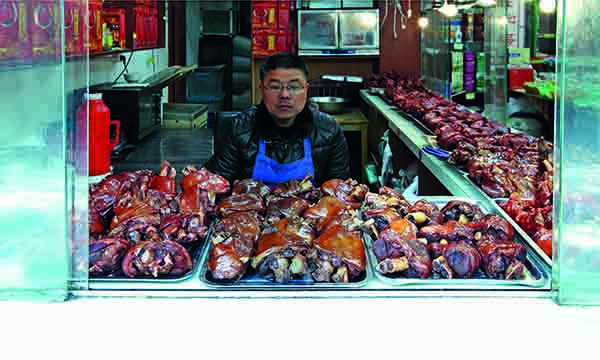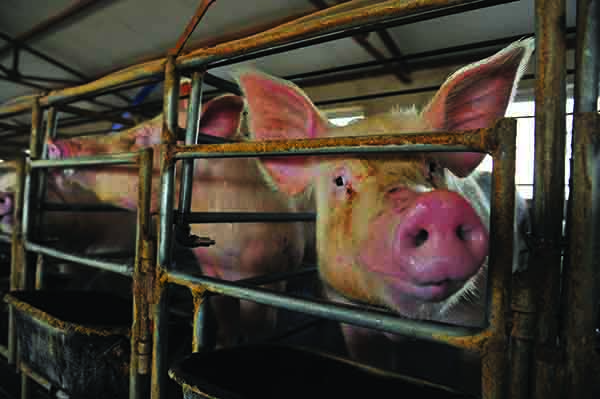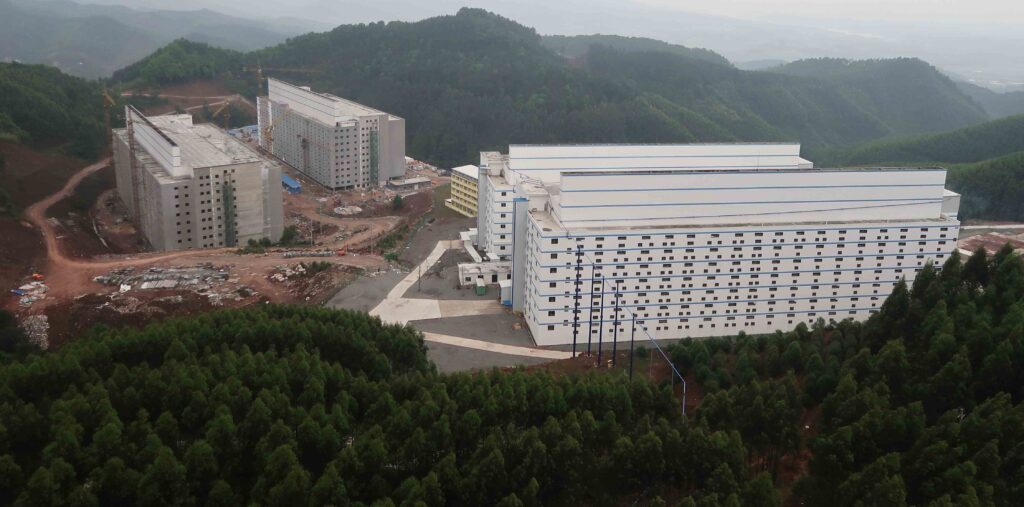China consumes and produces half the world’s pig meat, but its industry faces challenges to meet demand. Jez Fredenburgh kicks off our two-part China series, looking at its enormous influence on the global marketplace
Trotters, snouts, tails, heads, brains, ears – and everything else in between. Walking around China’s buzzing cities you’d be hard-pressed to miss the country’s favourite protein – pigmeat. In fact, around 60% of meat eaten by the Chinese comes from pigs.
Whether it’s a smokey street food stall in the western city of Chengdu, with Sichuan peppercorns spicing the air, or the sweet Cantonese cuisine of a high-end restaurant on a glittering rooftop in Shanghai, the Chinese nose-to-tail approach to pigs is evident everywhere.
Most likely you’ll spot this at a butchers’ in a neighbourhood market, where most people still buy their food. But it might be in the increasing number of high-end retailers servicing the growing middle classes, or an online retailer where hundreds of millions of Chinese customers now shop.
The meat could have come from one of China’s several million small farmers on one hectare plots, or one of the growing large-scale units big enough to rival those in the US. Or, as the world’s biggest buyer of pigmeat, it might have been imported.
But the domestic industry – and consumer trust – has been rocked by food safety issues, most recently the outbreak of African swine fever (ASF). More than 950,000 pigs have been slaughtered as the virus has spread right across the country.
Long before ASF, a restructure was under way to improve biosecurity, environmental standards and efficiencies, but analysts say the disease is likely to speed this up.
Pig production and consumption in China has a global impact. So what the country does next has big implications.
Undoubtedly though, it continues to offer big opportunities for the British pig industry in exports – in terms of balancing the carcase with fifth-quarter cuts, or premium products for consumers with deepening pockets and higher aspirations.
China’s global influence, not least on the pork sector, cannot be overstated.

GLOBAL INFLUENCE
As the most populous country in the world, with 1.4bn people, China is fast catching up with the US to become the world’s biggest consumer market.
Last year its economy grew at its slowest rate since 1990 – but this was still 6.6%. Four decades of reform have transformed China from one of the poorest countries in the world to the second largest economy, according to the International Monetary Fund (IMF).
This has had big implications for meat, and pork in particular. Already, Chinese people eat almost 55 million tonnes of pigmeat a year, compared to 8mt of beef and 4.8mt of sheep meat, fugures from the Organisation for Economic Co-operation and Development (OECD) show.
In terms of fresh and frozen pork, last year it imported 1.2mt and 947,000t of pig offal, according to AHDB. The USDA forecasts that China’s consumption of pigmeat will grow by 16% between 2016-2026.
For the last six to seven years, the relative strength, or otherwise, of Chinese import demand for all types of meat has been the major influence on global trade, producer prices and profitability, a report by consultancy and research company Gira said.

“As the world’s biggest meat importer it’s very important,” said Richard Herzfelder, senior advisor at Gira.
“This is even to the extent that people are starting to invest specifically to export to China.”
However, supplying China can be risky due to its boom and bust cycles, Mr Herzfelder warned. He cited a ‘crazy’ 2016, when domestic production had not met demand. Suddenly, China needed to buy more pork, there were rumours of shortages in Europe, and prices rose by 33% as a result.
“Anyone could make money – but it meant they could also lose money the next year when Chinese production responded,” said Mr Herzfelder.
This volatility is partly due to the size of China and the fact it operates as one market. Millions of producers react as one to price signals and government policies, and so production suddenly swings up and then crashes back down when prices fall.
This year will see China influence pork markets heavily again, according to Gira, which forecasts a 7% year-on-year fall in production due to ASF.
This will lead to a strong rise in Chinese domestic pork prices, and increasing import demand.
Longer term, China’s demand for pigmeat has started to level off, said Mr Herzfelder, but further opportunity is opening up in higher quality pork and the traditionally more expensive beef and sheep meat.
STATE OF THE INDUSTRY
China may be the fourth largest country in the world, but it faces a shortage of agricultural land to feed its population – just 11% of its land is cultivated, compared with 26% in the UK, according to the World Bank.
It also faces serious pollution, land degradation and water scarcity challenges from industry and agriculture.
In addition, much of its production is inefficient and segmented. This includes the pig industry, which is still comprised of millions of small-scale backyard farmers with 30-40 pigs each, said Mr Herzfelder.
This creates challenges for monitoring biosecurity and safety in supply chains.
To tackle these issues, the Chinese government is tightening up environmental regulations and biosecurity with the effect of pushing small scale farmers out of production. Urbanisation is accelerating this. Lowering the rural population and improving efficiencies is a government policy, with the aim that 50% of domestic pig production should come from 10 companies by 2025, said Mr Herzfelder.
The overarching concern from the government is the need to keep prices reasonable for its citizens, he added.
A big restructure is therefore under way. Modern, large-scale farms of up to 20,000 sows are being built with the latest equipment and technology, and in villages, family members are getting together and consolidating farms, he said.
Wens and New Hope are China’s biggest growers of pigs, and WH Group is the largest processor, slaughtering around 15m head a year.
A construction that stacks pigs seven to eight stories high in ‘hog hotels’ has also been built in a mountainous area as a solution to space shortages, although many people are sceptical of the practicalities, said Mr Herzfelder.
China’s biggest technology and online retailer, Alibaba, is also getting involved, working with a feed company to introduce technology that monitors sow and piglet health.
Challenges still exist though: it is becoming increasingly difficult to find large sites that do not compromise environmental regulations. And the supply chain is not vertically integrated, said Mr Herzfelder, although he believes this will change.
Regulations have pushed farming further away from urban areas, where the slaughterhouses are causing live pigs to be transported large distances. This poses welfare, biosecurity and efficiency problems and has also had a part to play in the spread of ASF, Mr Herzfelder added.
- In part two, next month, we will look at the long-term opportunities China provides for UK pork exports.




